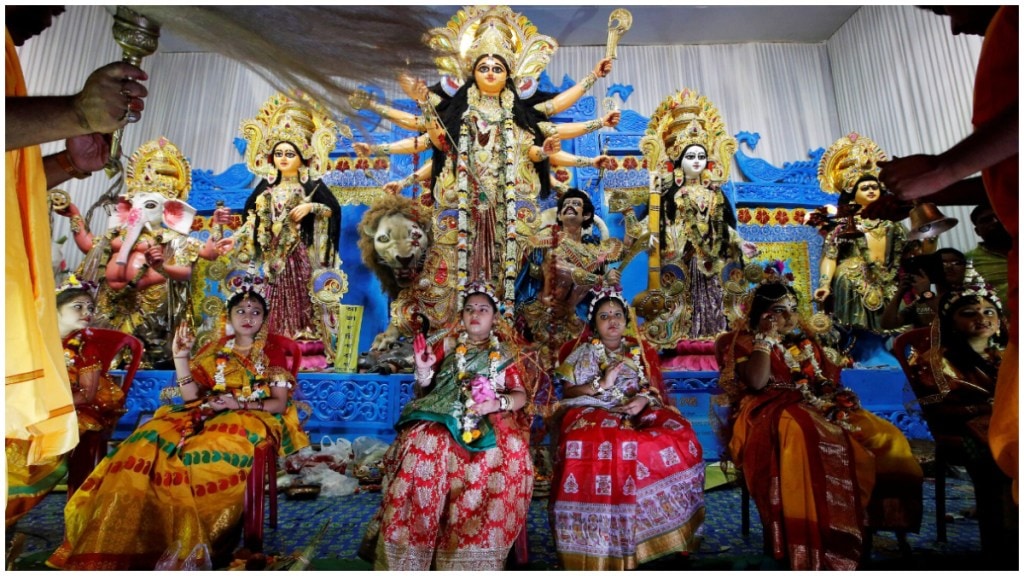Navratri, the vibrant Hindu festival is finally here. It spans nine nights and people devote this time to worship Goddess Durga in her various forms. Each day of Navratri is associated with a specific color, symbolizing different aspects of the divine feminine energy. Understanding these colors not only enriches the festival experience but also deepens one’s connection to the traditions and values represented by each hue.
Day 1: Yellow
The first day is marked by yellow, a color that symbolizes joy and optimism. It represents the energy of the Goddess Shailputri, the first form of Durga. Devotees wear yellow to invoke positivity and the blessings of new beginnings.
Day 2: Green
Green takes center stage on the second day, reflecting the earth’s fertility and harmony. This day honors Goddess Brahmacharini, who embodies peace and prosperity. Wearing green is believed to attract growth and renewal in one’s life.
Day 3: Grey
On the third day, grey symbolizes strength and resilience. This color represents Goddess Chandraghanta, who is known for her valor and courage. Donning grey encourages devotees to channel their inner strength and face challenges head-on.
Day 4: Orange
The fourth day brings orange, a color associated with enthusiasm and warmth. This day celebrates Goddess Kushmanda, who is believed to bring energy and happiness. Wearing orange inspires a sense of joy and vitality, uplifting the spirit.
Day 5: White
White signifies purity and tranquility on the fifth day of Navratri, honoring Goddess Skandamata. This color reflects calmness and devotion, encouraging devotees to embrace purity in thoughts and actions as they seek the blessings of the mother.
Day 6: Red
Red dominates the sixth day, representing passion, love, and power. It honors Goddess Katyayani, who embodies bravery and strength. Wearing red is a call to harness one’s inner power and to be fearless in the pursuit of one’s goals.
Day 7: Blue
Blue is associated with the seventh day, symbolizing protection and tranquility. This day is dedicated to Goddess Mahagauri, representing beauty and purity. The color blue encourages a sense of peace and is a reminder to maintain composure in turbulent times.
Day 8: Pink
On the eighth day, pink symbolizes love and compassion. This day celebrates Goddess Siddhidatri, who grants spiritual and material fulfillment. Wearing pink reflects an openness to love and kindness, fostering a sense of connection with others.
Day 9: Purple
The final day features purple, a color of spirituality and wisdom. This day honors the Goddess Durga in her most powerful form. Purple is a reminder of the importance of introspection and spiritual growth, culminating the festival in reflection and gratitude.
Conclusion
Each color of Navratri carries deep symbolic meaning, enriching the festival’s celebration. By wearing these colors and understanding their significance, devotees honor the various aspects of the Goddess while also reflecting on their own lives. As Navratri draws to a close, the vibrant colors serve as a reminder of the power of the divine feminine, encouraging individuals to embrace positivity, strength, and compassion in their daily lives.








